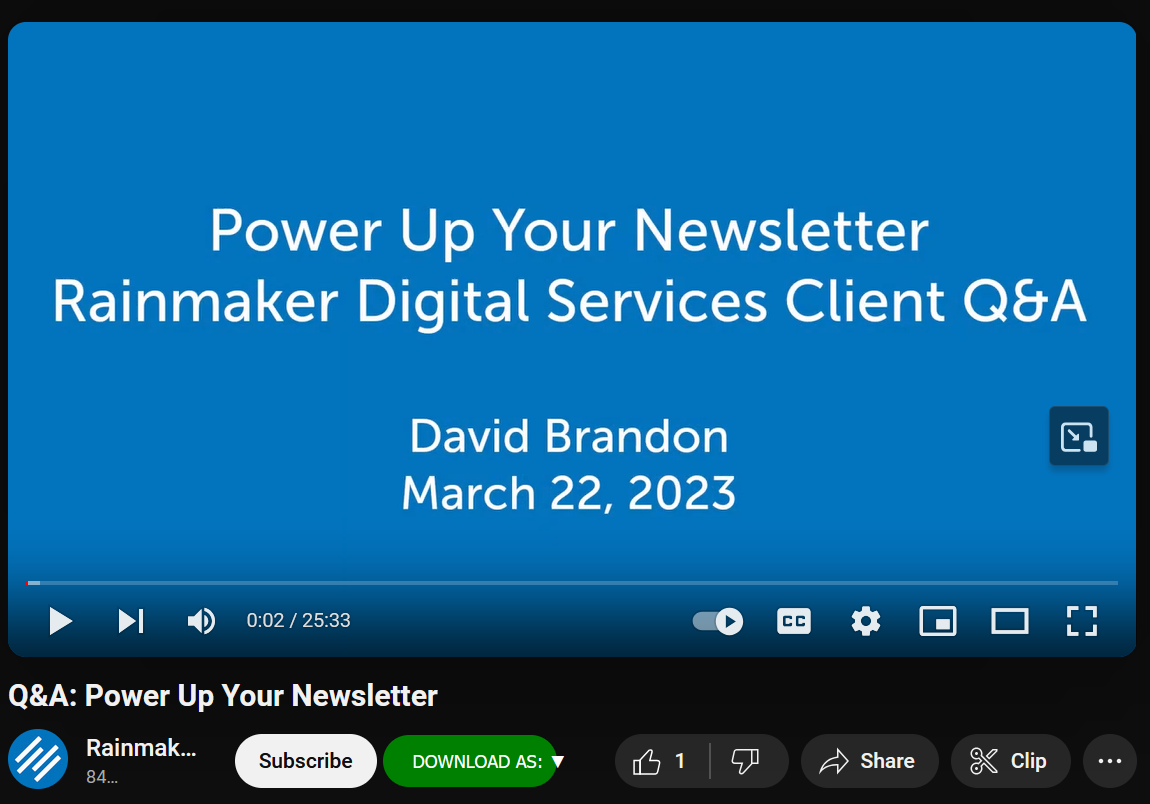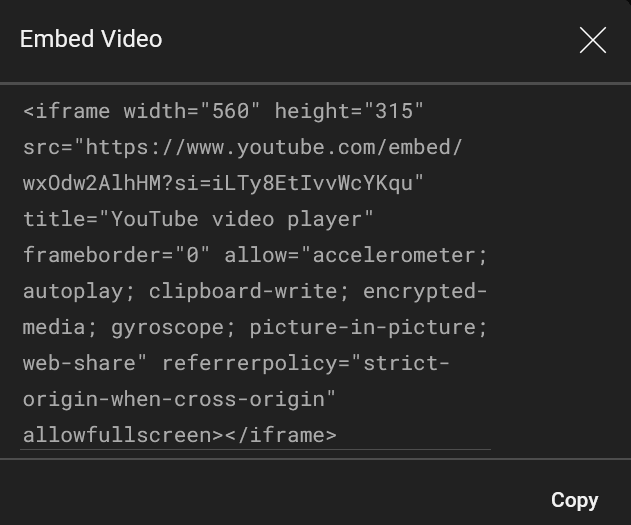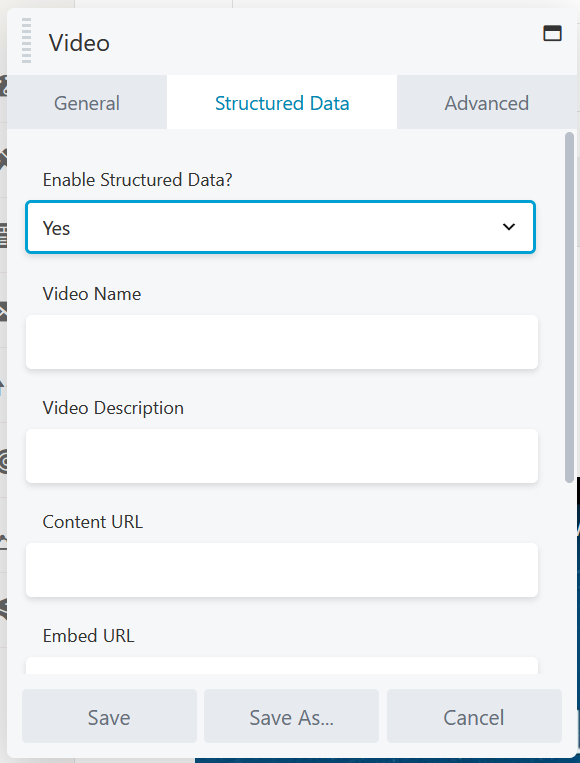Digital Marketing Solutions for Real World Results

Text has always been the backbone of SEO … but that’s starting to change
Blogs were the go-to for early content marketing. Though images, audio and video eventually became important as content, they were mostly relevant to SEO through alt tags or transcripts.
Optimization works differently today. Video SEO matters. Google recently updated its guidelines for video SEO — not because of major changes in the way it works, but to clarify for developers and marketers how they can improve the visibility of their videos. And since Google displays video results in four places (regular search, video search, image search and Discover), getting this sub-type of SEO right can help you get ahead.
Here’s how you can use video SEO to make your site more visible on Google.
Why Now for Video SEO?
Video has been part of the Internet for decades now. So why is Google emphasizing it now?
Video is popular. Sandvine’s 2024 Global Internet Phenomena Report notes that video accounts for “38% of the [Internet] traffic at an average total volume of 15.7 GB per sub per day.” This is by far the most of any category. Other studies place it even higher.
Comprehension is fast. Images allow us to understand information within 13 milliseconds — faster than any other format. Video is made up of moving pictures with audio and text; it’s the most information-dense format and the most immediately understandable. Its high popularity was always limited by bandwidth. No longer.
The market demands video. Instagram, TikTok, Facebook and YouTube all reward video content with exposure and reach. The world’s consumers spend the majority of their online time on these platforms.
Capitalizing on Google’s Video Features
Google would be foolish to ignore video when it’s so popular, effective and widespread, so it’s incentivizing its publication. When you embed video on your site, it drives traffic.
The search engine results page (SERP) is crowded. Google’s traditional “ten links per page” has given way to AI overviews, paid links, video 3-packs, local 3-packs, Google Maps and other additions. All of these push traditional links further down the page. With a more crowded SERP, you have to find ways to stand out.
Video appears in a separate area on the SERP — if it’s relevant, Google will show a 3-pack of videos that match the search query. These are ranked separately to the regular page results and may show up above them. In addition, there is less competition for video rankings than traditional web page rankings. This allows you to get better results than your text-only competitors.
There’s one more bonus too: if you have a video listed on a platform like YouTube or Vimeo as well as your own site, you may be able to double dip on listings. Google will index both, giving you twice the chance to show up.
Video SEO Starts with Watch Pages
This is where Google’s recent changes to its guidelines come in. Little has changed about the actual process of video SEO. But Google has made changes to clarify how to make video more visible.
The biggest insight from the documentation is that Google wants separate watch pages for each video you create. A watch page is a dedicated page that is devoted to a single video.
The content on that page has to support the video. For example, a text review or rebuttal of a video embedded on the page is not a watch page — the video is “separate” from the content. Neither is a product page including a video of the product in action — the focus of the content is the product, not the video. But a video with a transcript or a landing page built around a video is considered a watch page, because the information on the page is supporting the video. The video must be the star of the show.
It also doesn’t matter whether the video is hosted on your own site or somewhere else. With the cost of hosting and the ease of discoverability on major platforms like YouTube, sites rarely host their own video, but it is an option. Either one works for Google.
Setting Up Watch Pages for SEO Success
So now that we know we need a separate watch page for each video, how do we set those pages up for SEO success?
Use a Standard HTML Embed
When you embed the video in the page, it should coded with an HTML tag. Most major video hosting platforms embed with HTML by default. Here’s the YouTube process, for example.

Click “Share” at the bottom right to bring up the share screen.

From here, click “Embed” to bring up the embed code.

As you can see, this is an iframe tag in HTML; it will work just fine for Google’s purposes. Vimeo is similar. Copy the embed code to your clipboard and paste it in the code section of your editor.
Be aware that Google supports four HTML tags for embeds: video, embed, iframe and object. To create these tags manually, refer to a resource like W3Schools, which will walk you through each variable and how to encode it. This requires a little knowledge of HTML.
Use Structured Data
Structured data is a way to tell Google what kind of data is available on a web page, then give some specifics that make it easy for Google to display it in specialized search results. If you want your watch pages to show up in video search results, structured data helps a lot.
You need a little familiarity with code to be able to do your own structured data by hand. Thankfully, most modern CMS platforms will allow you to edit structured data through a WYSIWYG interface. For example, if you embed a video with Beaver Builder on Rainmaker Platform, the video panel lets you easily add details for structured data:

For more details, see Google’s article on structured data, which breaks down common structures you can use in HTML code.
Don’t Paywall Your Videos
If you want your videos to be indexed and used for SEO, don’t paywall your watch pages.
That includes both paid and non-paid restrictions; for example, if you were to set a membership rule disallowing access for anyone not logged in, the video won’t show up in Google results, regardless of whether or not the associated membership is free or paid.
There are reasons to gate access, but if ranking is one of the reasons you’re using a video, leave it open to the broader Internet. Don’t gate access.
Video SEO is Vital
If you create video content, video SEO is a powerful factor in your site’s success. It allows you to get indexed in multiple places, show up on SERPs that you might not otherwise reach and be relevant in a video-first world. Don’t neglect it. Use these basic SEO tips to succeed. And if you feel like you need more advanced help, don’t hesitate to reach out. Just drop us a line, anytime.
Best Regards,
David Brandon
Copywriter
Rainmaker Digital Services